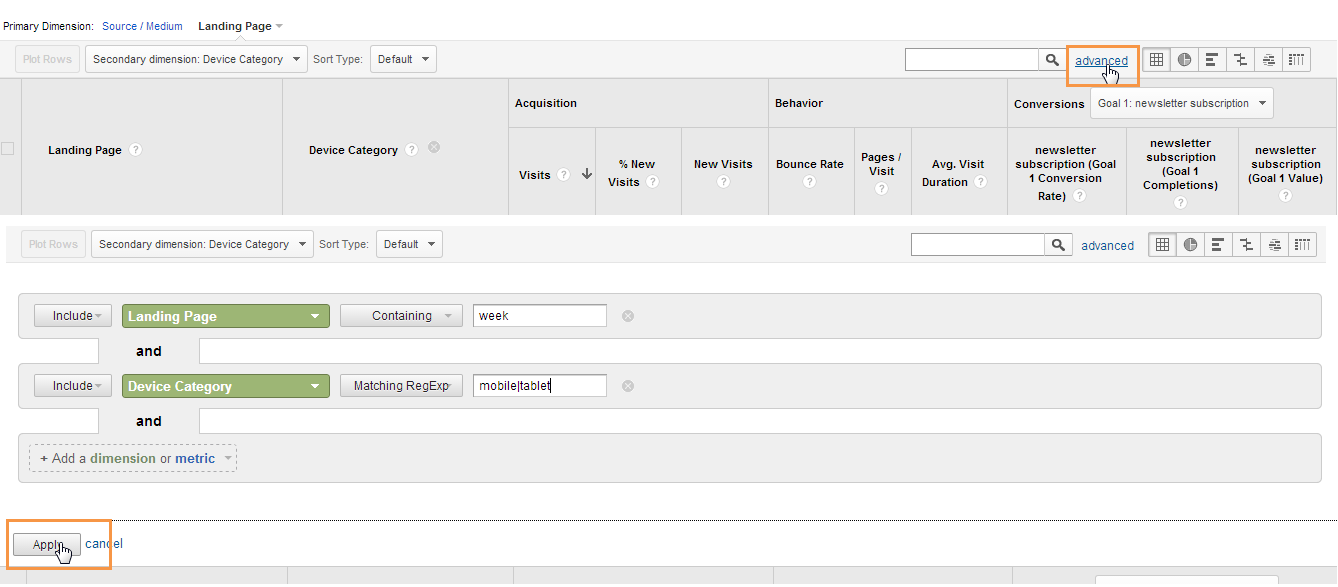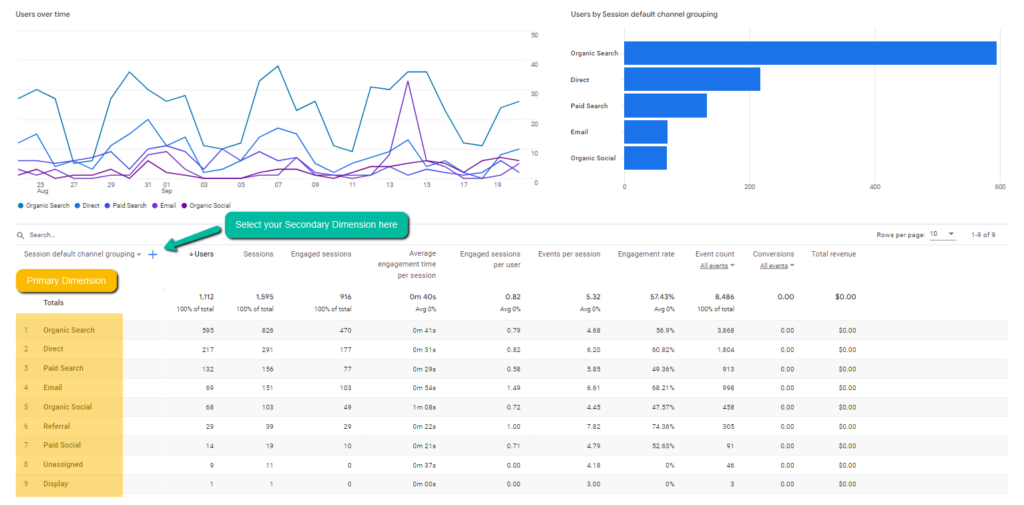Advanced Analytics Techniques: Leveraging Google Analytics Secondary Dimension
Advanced Analytics Techniques: Leveraging Google Analytics Secondary Dimension
Blog Article
Optimizing Your Digital Approach With Secondary Dimension Analytics: a Comprehensive Overview
In the realm of electronic method, the usage of second dimension analytics can supply a profound understanding of customer habits and internet site performance. By diving deeper into the layers of information past the main metrics, organizations can discover beneficial insights that lead the way for calculated decision-making and enhanced performance.
Recognizing Secondary Measurement Analytics
Understanding Additional Measurement Analytics provides a critical insight into the innovative analytical tools used in modern-day data analysis techniques. These analytics delve deeper than main measurements, offering a much more thorough understanding of information patterns and trends. By integrating second measurements, analysts can segment and filter data to discover surprise insights that may not appear with key evaluation alone.
Secondary Dimension Analytics allows an extra granular assessment of information by introducing additional parameters that can be applied to the key dimensions - secondary dimension. This strategy enables an extra nuanced evaluation of various data factors, resulting in a much more extensive analysis of complicated datasets
Furthermore, Secondary Measurement Analytics plays a substantial role in boosting data visualization techniques. By incorporating secondary measurements right into graphes, such as graphs or charts, experts can provide information in a much more comprehensive and insightful fashion, making it simpler for stakeholders to make and understand crucial insights notified decisions based on the data presented.

Executing Additional Dimensions Successfully
Making use of additional measurements tactically boosts the deepness and accuracy of information evaluation procedures, permitting more exact insights and informed decision-making. When executing second dimensions properly, it is essential to initial recognize the vital metrics that align with your specific goals and goals. By picking the most pertinent second dimensions, such as demographics, behavior, or technology, you can customize your analysis to extract meaningful insights.
Additionally, arranging and structuring your second measurements in a rational fashion within your analytics platform can simplify the data analysis process. secondary dimension. This involves categorizing measurements based on their connections and significance to the key metrics being analyzed. Creating customized records or dashboards that integrate these second dimensions can also facilitate a much more thorough understanding of individual interactions and actions
Moreover, regularly reviewing and changing your second dimensions based on the developing needs of your electronic method is crucial for maintaining the importance and effectiveness of your information evaluation efforts. By constantly maximizing the use of additional measurements, you can make best use of the utility of your analytics devices and drive educated decision-making within your company.
Studying Data for Actionable Insights

To begin the process of examining information for actionable insights, it is important to develop clear goals and essential efficiency signs (KPIs) that straighten with the company's objectives. By defining what success appears like for the certain metrics being examined, it comes to be less complicated to recognize significant patterns and fads that can notify decision-making.
Moreover, utilizing devices such as division and comparison evaluation can give added context to the data, permitting more nuanced understandings to be drawn. By damaging down information into smaller sized, a lot more convenient subsets, companies can reveal hidden chances and locations for renovation that may not appear when looking at the information as a whole.
Optimizing Digital Technique With Searchings For
Enhancing digital techniques via workable insights gleaned from data evaluation is critical for accomplishing ideal performance in today's competitive landscape. Once important findings have been removed from the information, the following action is to leverage these insights to enhance electronic methods efficiently. One essential element of this optimization process is the identification of patterns and patterns that can lead decision-making and resource allocation.
By analyzing the data findings, organizations can determine areas of toughness and weak point within their use this link digital technique. This details can then be utilized to fine-tune marketing projects, boost customer experience, and drive general performance enhancement. As an example, if the data reveals a particular market group that is extremely engaged with certain sorts of content, companies can tailor their approaches to much better target and satisfy this target market segment.
Moreover, optimizing digital approach with findings additionally includes continuous tracking and evaluation to guarantee that the executed changes are producing the preferred outcomes. By iteratively fine-tuning strategies based upon data-driven insights, organizations can remain ahead of the competitors and adjust to the vibrant electronic landscape efficiently.
Gauging Success and Iterating
Gauging success in electronic technique execution involves evaluating key performance indicators to assess the efficiency of strategies and techniques deployed. This examination is crucial in determining the influence of the electronic initiatives on the overall company goals. By tracking metrics such as site traffic, conversion prices, click-through prices, and interaction degrees, companies can examine the performance of their digital campaigns and make data-driven decisions for enhancement.
As soon as the information has been accumulated and assessed, it is necessary to iterate on the techniques based on the understandings gained. This repetitive process includes making adjustments to the digital techniques to optimize efficiency continually. By identifying what is functioning well and what needs enhancement, companies can fine-tune their digital method to enhance results. This intermittent method of determining, assessing, and iterating is fundamental to taking full advantage of the performance of electronic efforts and guaranteeing that they align with the company's objectives and objectives. Ultimately, continuous surveillance and improvement are crucial to staying affordable in the ever-evolving digital landscape.
Verdict
In final thought, incorporating additional measurement analytics into your digital approach can boost and give important insights decision-making. By properly implementing and examining information, businesses can enhance their electronic strategies for success.
Understanding Additional Dimension Analytics supplies a crucial insight into the advanced analytical tools utilized in contemporary information evaluation Click Here practices. These analytics dive much deeper than main dimensions, using a more comprehensive understanding of data patterns and trends. By integrating secondary measurements, experts can segment and filter information to uncover surprise understandings that might not be apparent with primary evaluation alone.
Using second dimensions tactically boosts the depth and precision of information analysis processes, enabling for a lot more accurate understandings and notified decision-making.Furthermore, arranging and structuring your additional measurements in a rational way within your analytics system can improve the data interpretation process.
Report this page